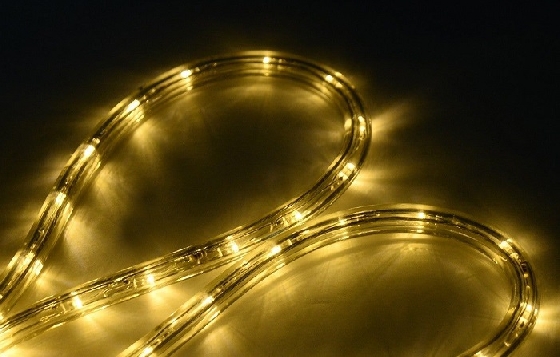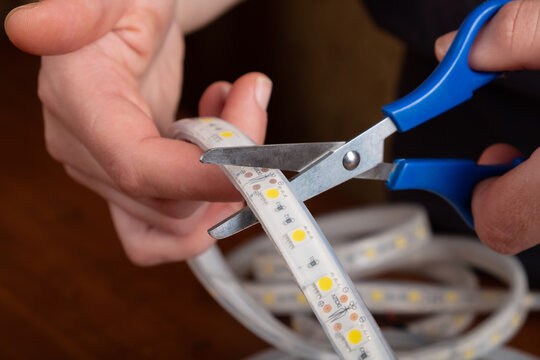Thuexedulichhn
Alijur
Dillonkclements
Donnalucas2024
Rufusroseeo
Vinhomeslongan
Guru-Vape
GuruVape
Arielwilson
|
Personal Info |
Rankings |
|
|
First Name : Unknown Sex : Woman Status : Single, without children Birthday : 05 May 1987 (38 ) Area : Other |
|
|
|
A few words |
||
|
The Ultimate Guide to Cutting LED Light Strips
LED Light Strips: The Easy Cutting Guide
LED strip lights are a versatile solution for illuminating any space, be it your kitchen or TV. With the ability to be installed on almost any surface, these lights have gained immense popularity. But what happens if you need to trim them?
The good news is that LED strip lights will still work even after being cut, as long as you do so along the predefined cutting lines. LED strips consist of individual circuits, so cutting them will simply separate one circuit from another. However, cutting the strip anywhere other than the designated cutting lines can cause that particular circuit to stop working, which can have adverse effects on the entire strip.
Now, cutting along a straight line might sound easy, but it can be a bit challenging for some people. In this guide, we’ll walk you through the process of cutting LED strip lights without overlapping and how to reconnect two separate lengths.
Can You Cut LED Strip Lights?
LED lighting comes in various types, ranging from flexible to rigid strips. Despite the differences between these options, there are some key features that most LED strips share. Whether you’re looking for waterproof or non-waterproof LEDs, monochromatic or RGB lights, you’ll likely find these common features.
Most LED strips have black lines at regular intervals, indicating where you can safely cut them without interrupting the current flow. These lines serve as markers to ensure you don’t damage the circuit while cutting.
The cutting lines can vary depending on the specific LED strip. Typically, they are found after every three LEDs. For instance, if there are 30 LEDs per meter with a distance of 10cm between each line, you should cut the strip at every 10cm mark.
To identify the cutting lines, look for the center of two copper pads on the circuit board. These pads should be symmetrical and act as guides when determining the right cutting point.
Will Both Sides Still Work Once You Cut Them?
Yes, both sides of the LED light strip will continue to work once you’ve cut it. However, it’s crucial to cut along the designated cutting lines to avoid any disruptions in the circuit. Cutting elsewhere can temporarily or permanently damage the circuit.
Each section between the cutting points maintains a closed circuit, regardless of the cut. Therefore, the cutting point is the only place you should make the cut. This is great news because it means you don’t create unnecessary waste, and you can still reuse the second half of the strip!
>>> Follow us to stay up-to-date with the latest information about LED lights
How to Safely Cut Strip Lights
If you want to customize the size of your LED strip lights, follow these four simple steps:
1. Before installation, test the strip to ensure it works properly. Cutting and soldering the lights may void your warranty, so proceed with caution.
2. Determine the desired length of the strip and calculate the number of lights needed. Find the closest cutting line on the LED strip to make an accurate measurement.
3. Use a sharp knife to cut the strip along the cutting line. Take your time and remember that these strips are designed to be cut safely.
4. When connecting the strip to power, you have two options: soldering or using a strip power source connector. Choose the method that suits your preferences and expertise.
Can You Reconnect a Cut-Off LED Strip?
LED strips are precisely measured to meet your specific needs. If they are cut too short, reconnecting them may not be possible.
However, if you’ve cut the strip along the designated cutting line, you can usually reconnect the two pieces. There are various techniques you can use to achieve this:
- Incorporate right-angle connectors into your assembly. These connectors are readily available and offer a cost-effective solution.
- Alternatively, you can use T-connectors to provide stability and ensure a secure connection.
How to Reconnect Cut Strip Lights
Here’s a quick guide on reconnecting cut strip lights. For a more detailed explanation, refer to my comprehensive article on running LED strip lights.
The easiest way to reconnect cut LED strips is by using strip connectors, as they require no special tools. Start by removing any translucent plastic covering the copper pads with a knife. Then, insert the strip into the connector, making sure the components align correctly. If you prefer a more secure connection, you can solder the strip directly using a soldering iron and some old wire. Once the connection is soldered, wire it up with additional old wire.
Remember to connect the black wire to the negative terminal and the red wire to the positive terminal. Use wire strippers to remove the coating from the wire ends, then twist the frayed ends together and attach them to the solder puddles.
After establishing the connections, plug your strip lights into a power source and ensure they’re working properly.
Troubleshooting: LED Strip Not Working After Cutting
Although customizing the length of LED strips is relatively straightforward, issues can arise. If your LEDs aren’t lighting up after being cut, check if they were designed to be cut in the first place. Cutting non-cuttable strips can cause permanent damage, as they rely on continuous circuitry.
If your strip is designed to be cut, make sure you’ve cut along the correct cutting line. Cutting outside of the designated line can cause the circuit to stop working, requiring you to trim it accordingly.
In addition, keep in mind that voltage drops can occur if the strip is too long. For 12V strips, exceeding 10ft can result in uneven brightness. Similarly, 24V strips should not exceed 15ft. To avoid voltage drops, reduce the lengths of the strip per power supply.
If you’re using RGB LED strips and they’re not changing colors, it’s likely due to incorrect polarity when wiring them. To fix this, flip the strip upside down and reconnect it.
>>> Follow us to view more best LED light strips
Conclusion
LED strip lights provide a customizable lighting solution for any room. Their energy-saving features and safety benefits have contributed to their growing popularity. If you’re hesitant about cutting LED strips, don’t worry! By following this guide, you can safely customize your lighting without any fear. Have you ever tried cutting LED strips? Do you prefer soldering or connectors? Share your experiences and thoughts in the comments below! |
||




















 Newbie
Newbie Bronze
Bronze Silver
Silver Gold
Gold Platinium
Platinium Titanium
Titanium